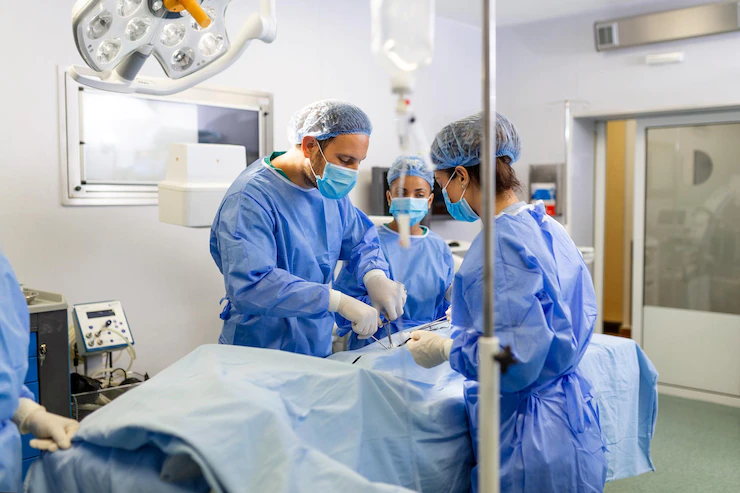
Laparoscopic Surgery
With the aid of a thin telescope connected to a small video camera that provides visuals for locations outside of the uterus such as the fallopian tube, ovaries, and the general pelvic area, laparoscopic surgery is a minimally invasive procedure often performed on the abdomen or pelvis. Small incisions used during laparoscopic procedures result in quicker healing and reduced scarring. This kind of surgery is used to address infertility issues as well as diagnose medical disorders.
Several diseases that can impair fertility can be treated with laparoscopic surgery, including:
Endometriosis
In this disorder, the uterine lining tissues begin to protrude onto the ovaries, colon, bladder, and other parts of the pelvic area. Physical discomfort, irregular bleeding, and infertility may result from this. Typically, endometriosis is discovered in women between the ages of 25 and 35. Infertility-causing tissues can be removed using laparoscopic surgery.
Adhesions
Adhesions are fibrous bands that resemble scars and develop between tissues and organs. They cause two sections of your body that ought to be distinct to bind together. Adhesions are often painless, but when they develop between the uterus, pelvic walls, fallopian tubes, or ovaries, they can result in infertility. Laparoscopic surgery is often the best method for removing adhesions.
Fibroids
Fibroids are non-cancerous tumors that develop in the uterine muscle cells and are a common occurrence. The majority of fibroids are tiny and symptomless, but because they interfere with embryo implantation and grow in size early in pregnancy, they can both impair fertility and result in miscarriages. An embryo’s ability to develop can also be hampered by uterine fibroids. Fibroids can be removed using a laparoscopic myomectomy. To avoid damaging the uterine lining, a mini-laparotomy may be a better alternative to remove bigger fibroids through a small incision (bikini cut) (endometrium).
Hysteroscopy Surgery
A tiny video camera is used during hysteroscopy surgery to view the uterus and uterine lining. To observe the uterine cavity, the telescope enters the uterus through the cervix. Small incisions are used during hysteroscopic surgery, which results in less scarring, fewer problems, and a quicker recovery. Common hysteroscopic procedures include:
- removing fibroids
- removing polyps
- removing scar tissue
- ablating the endometrium
Laparoscopic Hysteroscopy Procedure
Anesthesia
- A hysteroscopy typically doesn’t require anesthesia because it’s a quick treatment that doesn’t involve skin incisions.
- Some painkillers should be taken about an hour before the treatment to reduce discomfort.
- The cervix may occasionally be numbed during the surgery with a local anesthetic.
General anesthesia can be utilized for lengthier or more difficult procedures, such as the excision of fibroids.
Usually, the process lasts 5 to 30 minutes. A device called a speculum may be put into your vagina to hold it open as you recline on a couch with your legs supported by supports during the process. After that, an antiseptic solution is used to clean the cervix and vagina. A hysteroscopy, a lengthy, thin tube with a light and camera inside, is inserted into your womb. When it goes through your cervix, you can experience some minor cramping and pain. Then, your womb is gently pumped with fluid or gas so that your doctor may look inside.
Your doctor can identify any anomalies by using the monitor that the camera sends images to. Your uterine lining tissue may occasionally be sampled for future analysis. The action is referred to as an endometrial biopsy. Fine surgical instruments can be passed along the hysteroscope if you are having a hysteroscopy for the treatment of certain disorders like fibroids or polyps. These could be employed to burn or chop the abnormal tissue away.
Risks involved in hysteroscopy
- Damage to the womb is uncommon and may call for antibiotic therapy or, in very rare circumstances, a different technique to heal it.
- Cervical damage is uncommon and easily treatable.
- Excessive bleeding during or following surgery: If you underwent treatment while under a general anesthetic, this could happen and be addressed with medication or another technique; in incredibly rare circumstances, it might be necessary to remove the womb (hysterectomy)
- Infection of the womb: It typically responds to a brief course of antibiotics and may result in foul vaginal discharge, significant bleeding, and a fever.
